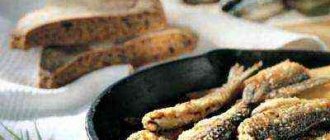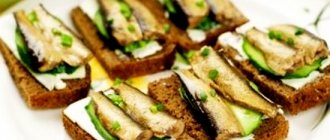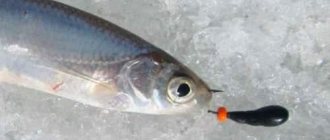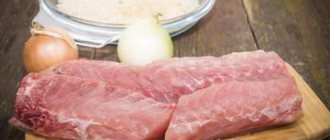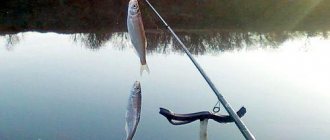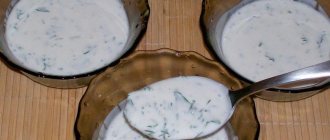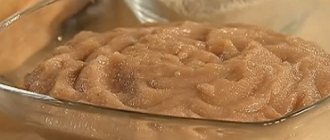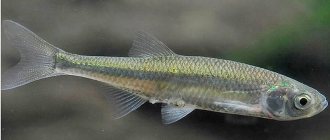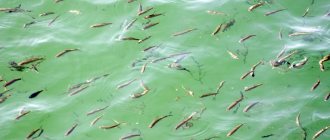How to wither bleak: useful tips and tricks
In order for the fish to dry well and turn into an excellent snack, you need to use simple tips during the cooking process:
- Always use coarse rock salt for drying.
- If the fish is not gutted before cooking, the taste will become slightly bitter. Don't like bitterness? In this case, it is better to first remove all the insides from the bleak.
- When drying, fish should be hung in such a way that they do not touch each other.
- The fish must be well salted before drying; it must be firm and not leaking fat. Otherwise, the cooking process will be delayed.
- Pay attention to the eyes of the fish: if they fall through, it means the bleak has collected enough salt.
- It is preferable to store finished fish in glass jars or paper bags in a cool place, avoiding sunlight.
- It is best to dry fish caught in early spring, late autumn or winter.
- If the withering process occurs in the summer, then it is worth thinking about how to protect the fish from fly larvae. To do this, before hanging, the bleak can be slightly dried and dipped in a solution of 3% vinegar. For hanging, you can make boxes from boards and gauze, or simply wrap the fish in several layers of gauze.
There are several ways to dry fish. We will introduce you to the most common ones.
Salting bleak using the dry method
Take a clean and dry container of a suitable size (preferably a larger one so that all the fish can fit). Then put the prepared bleak in it and fill the product with salt 5:1. Now mix everything well. After this, transfer the salted bleak to a box, sieve or thick canvas bag. The main thing is to ensure free release of the released fluid. Move the fish to a cool place for 2-3 days. Then wash it and you can soak the fish in cold water for 15-20 minutes. It is recommended to dry bleak salted in this way for 5-7 days and only then eat it.
Ukrainian way
First of all, you need to choose a container for drying. It should be large enough for all the fish to fit in, but the lid should be smaller in diameter.
There is no need to wash the bleak before salting. Cover the bottom of the container with a thin layer of salt and place the fish so that it covers the bottom. Next, the bleak is laid in layers, alternating the fish layer with a layer of salt. For the last layer of fish, use a little more salt than for the rest. The dish is closed with a lid, a weight of about 3 kg is placed on top and sent to a cold place (cellar or refrigerator) for two days. The fish should harden a little. The bleak is washed well with cold water, strung on a thread and dried.
Before hanging the fish, you can lay it out on paper. Within a few hours, excess moisture will drain from it and it will dry out a little.
Typically, the drying process takes place outdoors in a dark, well-ventilated place and takes three days. If humidity is high, the process may take up to seven days. Do not hang the fish in the sun, otherwise it will turn out dried, not dried.
You will need: bleak, salt. Use coarse salt per 1 kg of fish:
- In winter - at least 50 gr.
- In summer - 100-150 gr.
- In autumn and spring – 50-100 gr.
Spicy salted bleak recipe first
Those who often dealt with this fish have already developed their own way of preparing spicy salted bleak. We offer this one.
We will pickle it in a jar with a tight lid. Prepare a mixture of spices and spices: salt, lemon (or table vinegar), sugar, crushed dry bay leaf, black peppercorns, a few grams of wine vinegar, coriander, cumin, cloves.
Pour a little mixture into the bottom of the jar and place the first layer of fish. Again a little spice, again a layer of fish and so on until the end. We also pour the remaining spices into a jar. Let us remind you that the bleak should not be gutted.
In general, fish are almost never gutted for salting, but only washed and scaled.
When all the ingredients are in the jar, close the container with a lid and put it in the refrigerator for two days. During this time, the fish will release juice. Two days later, they took out the jar, opened it, closed it again, shook it, turned it over onto the lid and put it in the refrigerator for another day. Just three days and the delicious, spicy bleak can be served.
Lightly salted dried bleak
This recipe will appeal to those who love tender, lightly salted fish. Unwashed bleak should be covered with salt, placed in a prepared container under pressure and placed in the refrigerator for no more than a day. Add sugar to the salt, this will make the fish more tender.
Then wash the fish and hang it on the balcony for 3-5 days. Place the finished snack in a bag and put it in the refrigerator. Since less salt is used during cooking, you need to carefully ensure that the place where the fish is dried is dry and well ventilated, otherwise it may rot.
You will need: bleak – 10 kg, salt – 1 kg, sugar – 1-2 tbsp. spoons.
Properly prepared dried bleak can become a desirable delicacy and an original snack. Choose the method that is most convenient for you and enjoy delicious fish.
Pickled bleak recipe
This small fish can be marinated in different ways, for example, in oil. To prepare, we need, in fact, fish, salt and spices (bay leaves and peppercorns) and a lot of sunflower oil. By the way, you don’t have to use salt at all.
Place the fish in the prepared container in layers (washed and dried), periodically sprinkle with spices and sprinkle with malo. We put pressure on top of the fish, and finally pour sunflower oil into the container “from the heart.” It marinates for a couple of days.
Salted pickled bleak must first be salted for several hours and simmered in vinegar for a few more hours, only then it is poured with oil and left to infuse for at least 12 hours.
Lightly salted bleak
10 kg bleak, 1 kg salt, 1–2 tbsp. spoons of sugar.
The bleak is not washed, sprinkled with salt and placed under pressure for a day. Then the fish is washed and hung on the balcony, after 3-5 days, depending on the weather, it is removed, put in a bag and put in the refrigerator. The result is a very gentle salting – lightly salted. With this method of salting, the fish does not need to be soaked, and the drying process should take place in a dry and ventilated area, for example in a garage, but if it is damp, then with a small amount of salt the fish can rot. You can add “liquid smoke” to the pickling container, the main thing is not to overdo it, but so that the smoky aroma is clearly present. If the bleak is well-salted (hard), then fat does not drip from it, otherwise the fish will take a long time to dry, ooze fat, acquire a rusty tint, and lose its external and internal attractiveness. Adding spices when salting bleak, which has its own specific aroma, only interferes. The degree of salting of fish is determined by its eyes. As soon as they fail, it means that the fish has already gained salt.
Dried bleak - step-by-step, universal recipe
1.2k Views
Making dried bleak at home is quite simple. However, reading all kinds of recipes on the Internet and long posts, you may get the impression that this is not the case. All these “correct” methods revolve around the usual and time-tested universal fishing recipe for salting and drying fish.
Salted bleak and dried bleak differ only in the drying method. If salted fish - ram is dried in any dry place: on a radiator, on a balcony in an apartment, on the veranda of a private house, then the dried fish must be hung out and dried in the wind. In the sun or in the shade outdoors, in extreme cases in a well-ventilated area.
Endless lines of fish dryers along the sea coast in Scandinavian countries convincingly prove the possibility of drying fish even in the cold season. In fact, it is the sun and wind that dry the fish, not the temperature. Warmth dries.
Fisherman's recipe for salting and drying bleak
Actually, the universal fishing recipe for dried bleak is step by step, with a photo and description of the process.
Similar chapters from other books
Salted fish
Lightly salted fish Ingredients: 1 kg of fish, 200 g of dill, 10–20 g of sugar, 50-100 g of salt. Trout, herring, herring, flounder, mackerel and some other types of fish are suitable for this method of salting. Before you start salting, it is necessary to make sure that the fish is not affected by parasites,
Salted fish
Lightly salted fish Ingredients: 1 kg of fish, 200 g of dill, 10–20 g of sugar, 50–100 g of salt. Trout, herring, herring, flounder, mackerel and some other types of fish are suitable for this salting method. Before you start salting, you need to make sure that the fish are not affected
Salted fish
Lightly salted fish 1 kg of fish, 200 g of dill, 10–20 g of sugar, 50–100 g of salt. Trout, herring, herring, flounder, mackerel and some other types of fish are suitable for this method of salting. Before you start salting, you need to make sure that the fish is not affected by parasites, they
Lightly salted vodka
Lightly salted vodka Everything is done as described above, only the cucumber is filled with good strong moonshine. The vodka acquires the taste of lightly salted
Salted fish
Lightly salted fish Ingredients: 1 kg of fish, 200 g of dill, 10–20 g of sugar, 50–100 g of salt. Trout, herring, herring, flounder, mackerel and some other types of fish are suitable for this salting method. Before you start salting, you need to make sure that the fish are not affected
Salted fish
Lightly salted fish For 1 kg of fish, 200 g of salt, 10–40 g of sugar. You can cook salmon, trout, herring, herring, flounder, mackerel and other fish lightly salted. Sprinkle the filleted fish with skin and scales with salt and sugar. Place a layer of fillets (skin side down) on parchment paper.
Lightly salted caviar
Lightly salted caviar Free the caviar of carp, pike, pike perch, and catfish from the films by passing it through a meat grinder or winding the films on a fork. Prepare brine at the rate of 70 g of salt per 1 liter of water, bring it to a boil and cool to 70 °C. Pour brine over the caviar for 30 minutes, then strain
Lightly salted mackerel or herring
Lightly salted mackerel or herring For 2 kg of fresh mackerel or herring you need 1 liter of water, 5 tbsp. spoons of salt, 6 bay leaves, 3 tbsp. spoons of granulated sugar, 1 teaspoon of dry mustard, peppercorns, cloves. Clean the fish, rinse. Boil water with salt and sugar, mustard, bay
Salted trout
Lightly salted trout Ingredients 1 kg of trout, 200 g of dill with umbrellas, 10–15 g of sugar, 50–100 g of salt, pepper to taste Method of preparation First of all, you need to process the fish and make sure that it is not affected by parasites, their larvae, etc. n. Processed fish
Salted trout
Lightly salted trout Ingredients: 1 kg of trout, 200 g of dill with umbrellas, 10–15 g of sugar, 50–100 g of salt, pepper. Method of preparation: First of all, you need to process the fish and make sure that it is not affected by parasites, their larvae, etc. Rinse processed fish
BLEAK
BLECK This is a small fish that is found in rivers and lakes. It is thin and flat, 3-6 inches long, and covered with scales, which are used to give fake pearls the shine of real ones. Bleak meat is soft and fresh. It is only eaten fried
Lightly salted fish
365. Lightly salted fish products 1 lightly salted fish, 7 boiled crayfish, greens, 1 lemon. Cooking time – 30 minutes. Gut the fish, remove the bones, place on a dish, sprinkle with lemon juice and garnish with boiled crayfish and
Salted fish
Lightly salted fish Ingredients 1 kg of fish (any), 200 g of dill, 10–20 g of sugar, 50–100 g of salt. Method of preparation Trout, herring, herring, flounder, mackerel and some other types of fish are suitable for this method of salting. salting, you need to make sure that
Lightly salted cabbage
Lightly salted cabbage Components White cabbage – 5 kg Carrots – 300 g Apples – 500 g Salt – 130–150 g Chop the cabbage, put in a sieve, pour over boiling water and then cold water. Place the cabbage prepared in this way in layers in a bowl for fermentation. Layers of cabbage
Lightly salted fish
Lightly salted fish 1 lightly salted fish, 7 boiled crayfish, herbs, 1 lemon. Gut the fish, remove the bones, place on a dish, sprinkle with lemon juice and garnish with boiled crayfish and herbs. Cooking time -
Frozen lightly salted herring
Frozen lightly salted herring Slowly defrost the herring (stands in the refrigerator for a day and gradually defrosts), gut it, cut off the head. Mix salt and sugar in a ratio of 3:1. You can add to the mixture: crushed dill seeds, caraway seeds and any other spices that you like.
Salted bleak recipe
Spring... time for active fishing for this interesting fish)))
Pickling is one of the new recipes...
| bleak | 500 g |
| water | 1 l |
| salt | 3 tbsp. l. |
| sugar | 2 tbsp. l. |
| carnation | 3 pcs |
| pepper mixture | 15 pcs |
| allspice peas | 5 pieces |
| coriander seeds | 0.5 tsp |
| Bay leaf | 3 pcs |
| spicy mustard | 2 tsp. |
| greenery for decoration | 30 g |
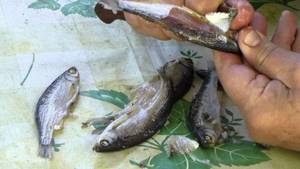
- Take a liter of water
- Place salt, sugar and spices in water
- Bring to a boil. Boil for 3 minutes. Turn it off. We send it to cool.
- While the brine cools, we clean the bleak. Remove scales and entrails.
- Add mustard to the cooled brine
- And beat with a whisk
- Place the bleak in a container
- Fill with brine. Cover with a lid and place in the refrigerator for 2 days.
- The salted bleak is ready.
- Serve with herbs and serve!
Don't forget to boil the potatoes))))
Best answers
The smaller the fish, the shorter the period... but 72 hours is better, so that the parasites die then soak in cold water to remove the salt...
Do you need shekel nahur? Not enough fish?
It does not need to be salted, but marinated. There are a lot of recipes on the Internet... gorging!
Provided that the fish is fresh and under pressure for a day. To be on the safe side, you can have two. No more . Soak the pickles for an hour per day
If you don’t want to get spectacled snakes (not to be confused with cobras), then salt for a week. salt with coarse non-iodized salt mixed with sugar ((5/1). then the fish will not taste salty, and there is no need to soak anything. salt dehydrates the meat, and will also kill parasites, and sugar will not give rise to an unpleasant smell (the fly also does not sit down during drying) and taste. Initially, sugar was used for this, and not for distilling moonshine and drinking tea/coffee.
A day is enough. As for parasites, they didn’t even know about them 20 years ago. Except about the tapeworm. Those that do not die when salted will bend when dried, and if they do not die when dried, they will be digested in the belly and fall out as larvae.
Fried bleak
The main secret of getting simply delicious fried bleak is very simple. No special seasoning required, no olive oil or cayenne pepper with alligator gland required. You just need to do everything right. And the cooking recipe consists of the cooking time.
So, let's fry the bleak
It is necessary to clean the fish of scales, which are often simply removed with your fingers and washed off with water. Like the fish itself, the scales are also very delicate. Naturally, you need to gut the fish and remove the heads, rinse the carcasses in cold water and add a little salt. If we use coarse salt for drying, then it is better to add fine salt of the “Extra” type. The main thing is not to oversalt, since the fish is small, tender, and quickly salts out. And “Extra” salt tends to produce a stronger salting effect than coarse salt, which draws out liquid. Next, you need to roll the carcasses in dry semolina or breadcrumbs. Heat the frying pan and place the carcasses. I don’t know what kind of pan we once purchased, but as it turned out, it was the best frying pan I ever knew. Its coating turned out to be better and more durable than all the vaunted “tefals”. It is on this tray that I usually fry bleak and other products. It holds a lot of fish. And the fish never burns or sticks, no matter how much it is cooked.
